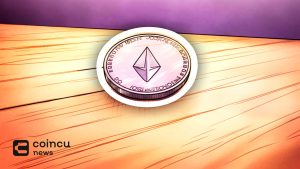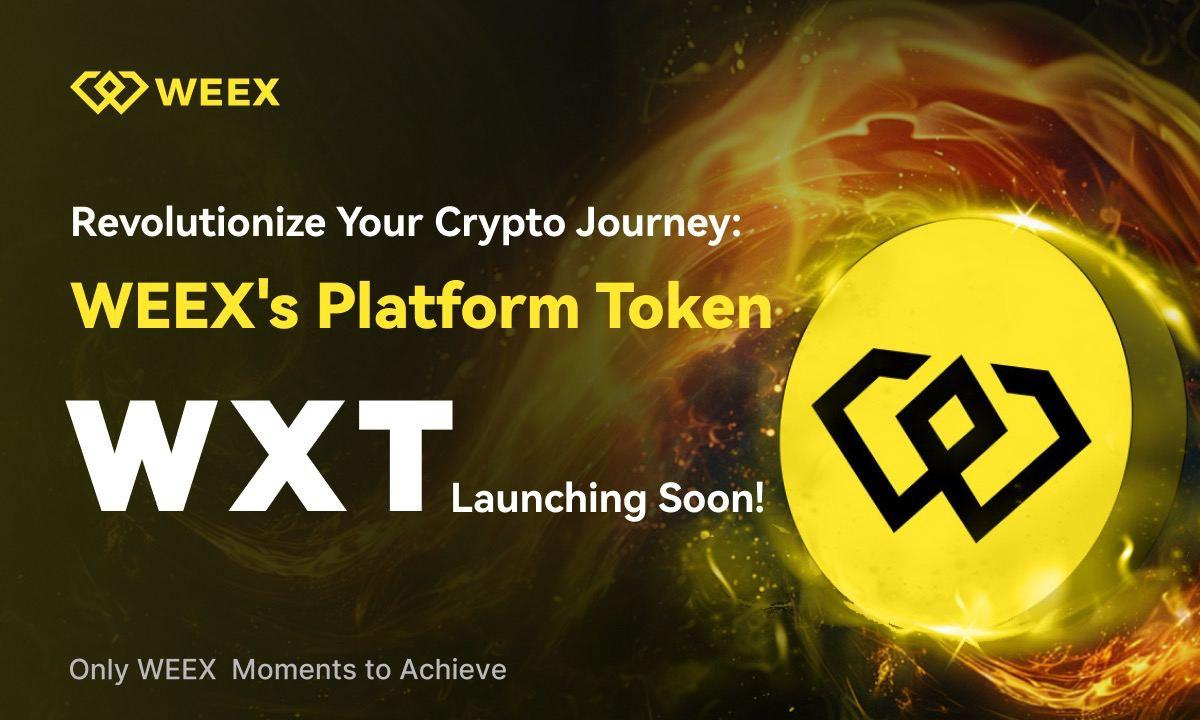Quai Network Review: Provides An Innovative And Scalable Multi-chain Solution With PoW 2.0
With increasing demand, Layer 1 is currently having difficulty providing full scalability resulting in high fees. So Quai Network was born. By providing an innovative and scalable multi-chain solution, Quai Network is a decentralized blockchain that can truly scale for worldwide adoption. Let’s learn details about this project with Coincu through this Quai Network Review article.
What Is Quai Network?
Quai Network is an extensible solution for Layer 1 platforms by combining sharding technology and PoW 2.0 mechanism. Quai Network’s solution is based on revolutionary advances in blockchain sharding technology and the use of Proof–of–Work 2.0 to reduce network congestion and improve transaction speeds across the network.
Because Quai Network is modular, it can scale horizontally to accommodate more users as the network grows. By making huge strides in the overall scalability of the blockchain, it paves the way for the next billions of users to join Web3.
Scalability problems in a standard Layer 1 blockchain can lead to exorbitant fees and centralization. Quai Network employs sharding to address the issue by providing 13 blockchains that operate simultaneously. In order to speed up block creation, each blockchain is either a Prime, Region, or Zone chain that creates blocks in an asynchronous manner.
Quai Network uses merged mining and the PoW 2.0 consensus process to maintain the network’s high level of decentralization without losing performance for it.
Development process
Yanni Georghiades, Alan Orwick, Jonathan Downing, Karl Kreder, and Sriram Vishwanath, the five businessmen that created Dominant Strategies, are the minds behind the blockchain project, which was envisioned in 2019. At the University of Texas in Austin, distributed systems research led to the creation of the Quai Network.
In 2021, after its creators’ whitepaper was released, work started on putting the infrastructure in place. Testing on the network started in early 2022, and as a result, two very successful rounds of capital injection from top venture capital companies Polychain Capital and Alumni Ventures, were introduced.
The parent company of Quai Network, Dominant Strategies, is undoubtedly well-equipped to manage the increased demand because it has the necessary resources and a reliable blockchain. It has about 50 personnel working on the Quai Network project as of 2023, providing quick, easy, and affordable decentralized financing (DeFi).
Outstanding features
Proof of Work 2.0
This PoW upgrade of the Quai Network combines Blake3 hashing with core protocols. This approach helps to increase speed while maintaining high security. Not only that, PoW 2.0 is proven to be more environmentally friendly as it reduces the carbon footprint per individual transaction.
Quai Network uses this concept of combined CPU power to secure a brand-new blockchain network. Quai Network has its own parent chain that secures the many other chains below it. They call their PoW 2.0 because it uses the Blake3 hash function, which increases the tracing speed on the SHA-256 hash function by more than 10 times while remaining highly secure; PoW 2.0 is environmentally friendly and low cost.
In addition, Quai Network is horizontally scalable, which means additional chains can be created to meet network needs.
Sharding
Sharding is a familiar technology and again it is applied in Quai Network. Sharding is the process of splitting a database horizontally to spread the load – a common concept in computer science. Sharding reduces network congestion and increases transactions per second by creating new chains, called “shards”.
Sharding makes the network more decentralized: With shard chains, validators only need to store/run data for the shard they are validating, not the entire network. This speeds things up and greatly reduces hardware requirements, allowing validators to run Quai on personal laptops or phones, allowing more people to participate in Network administration. This directly increases the security and decentralization of the network.
Merged mining
In the whitepaper of Quai Network, this concept is mentioned. It’s basically the process of securing multiple blockchains with just one miner. An example of merged mining is BitDNS or Namecoin. It allows miners to secure both the Bitcoin and Namecoin networks. In the case of Quai Network, it allows miners to secure both the Quai and Ethereum networks through the use of the same Ethash hashing algorithm.
- Coincident block: In the Quai network, a coincident block represents levels of work that are put together on chains.
- Decentralized bridge: Quai Network optimizes coincident blocks generated from merged mining to transfer state across blockchains.
- Sharded address space: Quai Network uses sharded address space, which means that only certain addresses can successfully send money in each blockchain. This is done so that transaction validation can be easily executed in cross-chain.
Fast speed
With 13 blockchains running concurrently, Quai Network provides high-speed block generation. All these chains will generate asynchronous blocks. Quai Network’s average block generation time is estimated to be around 1.1 seconds/block.
Decentralization
Through the development of PoW 2.0, using both merged mining and sharding, Quai Network remains open source and highly decentralized.
Security
Through the use of merged mining and coincident block, all state changes of Quai Network will be confirmed at the last step by 100% hash power of the network. Now, the Quai Network Review article will learn about the project’s operating mechanism.
Working principle
Quai Network is formed after blockchains are forked (shard). It uses a single blockchain and splits it into many smaller and faster blockchains to improve performance. What makes the blockchain really special is the structure and incentive mechanism in organizing shards.
Unlike most other shard blockchains, Quai Network is Proof-of-Work. PoW provides an objective verifiable mechanism that is resistant to centralized control by society.
Through the use of sharding, the network is able to handle more robust transaction throughput. Each thread can run asynchronously to confirm and validate transactions. Users can freely move through chains to optimize the ecosystem that benefits them the most.
Because users can move coins freely, miners are also incentivized to mine, where users interact to collect transaction fees. This effect, along with miner rewards, leads to an even distribution of hashrate and security across various shards.
Nodes will also see an incentive to optimize their network topology. The end result is improved latency, allowing each shard to generate larger-sized blocks. In addition, Quai Network can also add more shards to optimize the structure of incentivizing miners, users, and nodes so that they generate more transaction capacity.
In addition, it can add more shards to further optimize the structure that incentivizes miners, users, and nodes to generate more transaction capacity.
Purpose of being achieved
The Quai Network seeks to resolve the infamous blockchain trilemma, which has slowed down the development of well-known blockchains like Bitcoin.
According to the blockchain trilemma, blockchains must choose between sacrificing scalability, security, or decentralization. Theoretically, a blockchain cannot support all three of these characteristics simultaneously. Typical blockchains, for instance, can address scalability difficulties by raising block size, which permits a larger transaction rate. Nevertheless, it will result in fewer nodes in a network, which will lessen decentralization. Security and other property are subject to similar criticisms.
With the goal of expanding blockchains without compromising decentralization and security, Quai Network was created to address this issue.
QUAI Tokenomics
The Quai Network ecosystem revolves around the QUAI token. The token supply has been strictly limited by the network to 100 million, which should reduce inflation in the near future. Future concerns about deflation will be addressed by the restricted supply of QUAI.
The project’s tokens will be distributed in detail as follows:
- Adoption incentives: 25% of the total QUAI coin supply is allocated to provide important integrations for Quai Network. This can happen in the form of partnerships with Fortune 500 companies, governments and civil society organizations.
- Mining: 20% of Quai Network’s total resources will be used as block rewards for miners.
- Foundation: 15% of the QUAI tokens are allocated to the founding organization, the Quai Foundation. This amount of QUAI token will be used for marketing activities, business development, brand recognition and protocol support. These tokens have a lifetime of 10 years and can be burned if not allocated.
- Strategic partner: 15% of QUAI tokens are allocated to strategic partners in line with Quai Network’s goals and values.
- Infrastructure partner: 5.5% of QUAI tokens are allocated to partners who have supported Quai Network.
- Founder: 5% of the supply is reserved for the founding members of Dominant Strategies.
- Bounty: 5% of the supply will be used as a reward for individuals who contribute in terms of writing code, creating content, media, or other forms of promotion for the project.
- Testnet incentives: 0.5% of the total supply has been allocated to reward participants of Quai Network testnets like Iron Age Testnet…
- Contributor: 4% of the supply will be given to the core contributors to the Quai Network ecosystem.
- Community: 3% of the supply has been allocated to the community.
- Exchange liquidity: Quai Network will allocate 2% of the total supply to provide early liquidity to exchanges. This liquidity will be used to meet initial adopters at the launch of the Quai Network mainnet before sufficient user-provided liquidity can be obtained.
Conclusion of Quai Network Review
Since traditional L1s like Bitcoin and Ethereum are finding it difficult to handle the rising amount of transactions, they are looking to L2 alternatives. Quai Network, on the other hand, has developed an inventive PoW L1 that can expand to become the global blockchain without compromising any of the security, fault tolerance, or decentralization features of the conventional L1.
Additionally, the network may be adopted quickly and easily due to Quai Network’s ability to be combined and mined with Ethereum and its possible interoperability with Ethereum smart contracts.
QUAI can deliver a strong return on investment from the standpoint of investments (ROI). Its much anticipated mainnet debut may encourage additional investment possibilities and lead to a high price for the QUAI token. Hopefully the Quai Network Review article has helped you understand more about the project.
DISCLAIMER: The Information on this website is provided as general market commentary and does not constitute investment advice. We encourage you to do your own research before investing.
Join us to keep track of news: https://linktr.ee/coincu
Harold
Coincu News

























